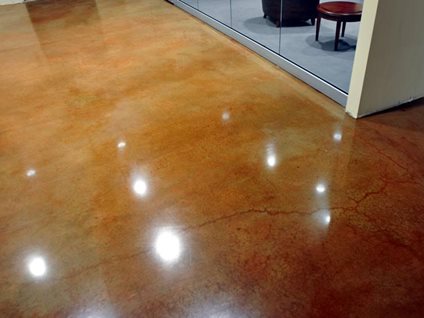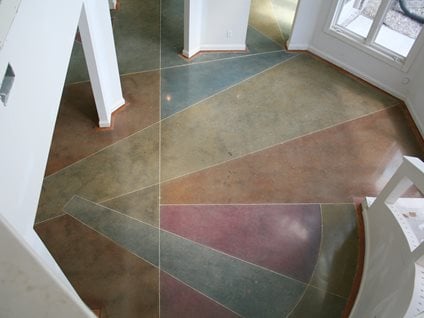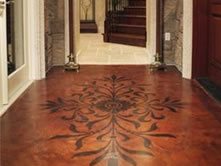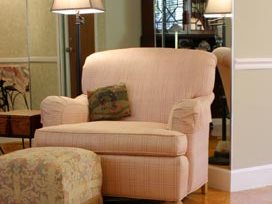Fix Concrete - Repair Cracked Concrete Floors
Time: 03:17
Video on how to turn your cracked concrete into a beautiful concrete floor.
With dreams of enhancing your concrete floor, you might be discouraged by the existing cracks that seem to glare at you from the surface. As long as they're not creating structural problems, the cracks in your floor can be an asset to your design. Believe it or not, many people find that accentuating cracks adds to the character and rustic nature of their floors. However, If cracks are perceived as an eye-sore, there are easy ways to repair cracks, disguise, or even cover them up with an overlay. For some though, there's no reason to cringe at cracks. Just take a look at these ways you can incorporate them into an appealing concrete floor design.
Ideas for incorporating cracks into concrete flooring designs:
- Accentuate the cracks with a stain or dye to create an aged appearance
- Sawcut a pattern into the floor that disguises the cracks
- Stencil a designs onto the floor that will camouflage hairline cracks
- Leave minor cracks alone if a distressed or rustic look is desired
- Use cracks to guide your design, turning them into a natural flagstone pattern for example

Darken to Add Decorative Effects
Minor cracks and pits can be darkened with additional applications of stains or dyes. In some instances, cracks can be filled with a white-tinted filler that will absorb even more color making the cracks more visible. Depending upon the number of cracks in a floor, darkened cracks can impart a crackle effect, giving the floor a marble, veined look. See how this floor was dyed and polished to accentuate flaws for distinctive decorative effects.

Disguise with Sawcuts
If your ideal floor design requires symmetry rather than randomness, work existing cracks into your design through sawcuts. One way to do this is to leverage your design off the control joints. Existing grooves in the concrete are there to help minimize cracking. Your contractor can sawcut more "joints" into the concrete that follow existing crack lines. Multiple patterns can be created that look purposeful, but yet blend the design with cracks. See how cracks were worked into the design of this residential floor.

Blend in Patterns
Cracks don't have to be the first noticeable thing in your floor. By using color and patterning, cracks can remain visible but are less obvious. For instance, cracks can be hidden in stencil patterns applied to a floor where beautiful floral patterns, or repeating designs mask blemishes. For another example, the hairline cracks evident in this university hall floor were less noticeable because the floor was saw cut into geometric patterns and colored with varying shades of stain. The darker stained boxes against the lighter stained boxes were more eye-catching than the subtle flaws in the floor.

Create Free-Form Designs
Let the cracks in your floor guide your design. Cracks are a great design asset if you want to create a rustic, fractured look. Their random patterning and depths can add natural detail that can't be duplicated. Airbrushing cracks with color can accentuate them from other parts of the floor making them look uninhibited, adding to the natural, earthy feel of concrete.